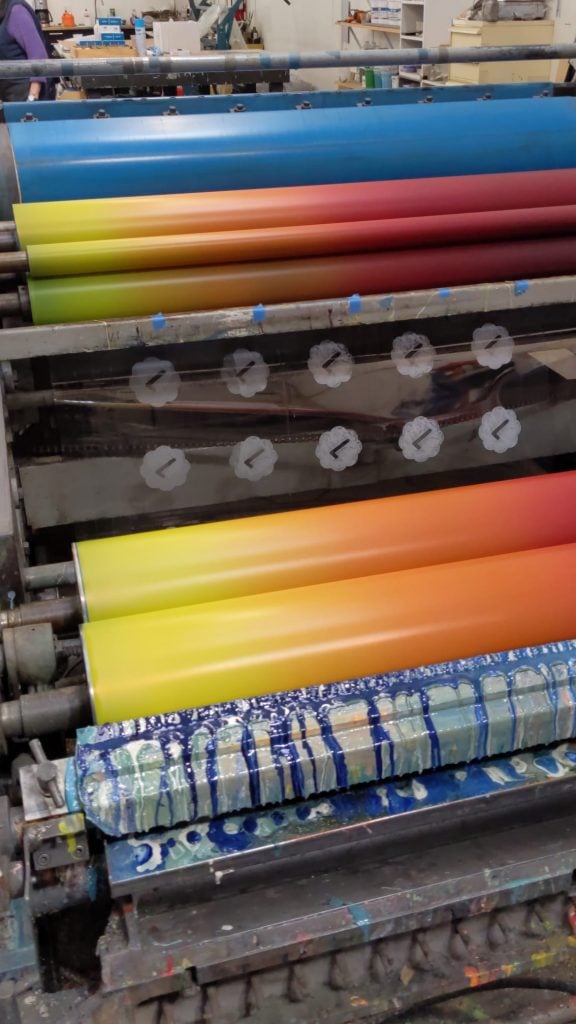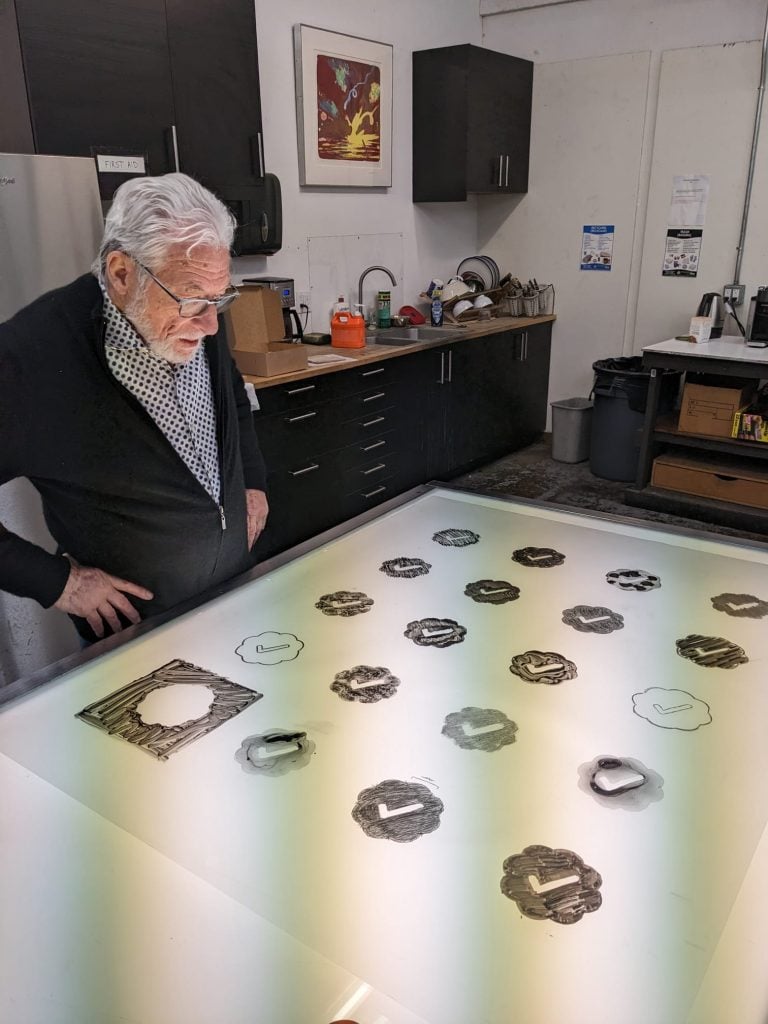NFTs
Digital Artist Jack Butcher Is Offering Handmade Prints of His Viral Multimillion-Dollar NFT Collection, ‘Checks’
Platformed by Christie's, the 'Checks Elements' sale includes three print-and-NFT pairs.

Platformed by Christie's, the 'Checks Elements' sale includes three print-and-NFT pairs.

Richard Whiddington

There’s nothing Twitter can agree upon. Discord, outrage, mockery—these are the platform’s currencies, its enduring ethos. There was a time, however, when the platform’s little blue tick indicated status, an account of verified repute, no matter how fraught.
Elon Musk terminated those halcyon days, democratizing authenticity at $8 a month, and ever since there’s an artist who has been toying with Twitter’s flattened reality and asking the giant question: can humanity find consensus on anything?
That individual is Jack Butcher, an advertising guru turned NFT star, whose Checks project, released earlier this year, gamified collecting grids of Twitter checkmarks and generated in excess of $50 million. The game went like this: first came a 24-hour blitz with open-edition NFTs priced, naturally, at $8, next collectors were incentivized to burn this original for an on-chain 80-checkmark grid that when burned with another, created a 40-checkmark NFT. The game logic extended until collectors arrived at the end of the rainbow: a single black check.
Precisely 100 days on from the launch of Checks, Butcher will close its newest installment with Checks Elements, a 152-piece generative art collection platformed by Christie’s that offers collectors physical companions to digital assets. An auction of three print-and-NFT pairs runs from May 16 through 23 on Christie’s 3.0 NFT platform. Prints will ship from May 24.

The Water, Air, and Earth NFTs from Elements. Photo: courtesy Jack Butcher.
In his latest search for universal consensus, Butcher has traveled to the pre-internet era, landing on earth, water, air, and fire as primal categorizations that defy geography, language, or culture. In essence, Checks collides ancient symbols of humanity’s analog past with the sign that once reigned supreme in the digital. Consensus, Elements seem to profess, is temporary.
Each of these elements correspond to a dominant color, whose variations and gradations are revealed in four-by-five grids produced by a tailored algorithm. These are minted digitally with a corresponding work printed via a lithographic press on paper chosen for its ability to handle intensive overlays of color. The works are 30 by 42-inch mono-prints spread across six tiers from Alpha (four prints) to Complete (64 prints).
“In translating Checks to the physical world, there’s nothing interesting to me in a one-click process. It’s not conceptually exciting,” Butcher told Artnet News. “Checks is about authentication and there are parallels in how we create generative algorithms and the printing process. You have constraints and you add variables to create unique outputs—it’s a very handmade process.”

Earth from Elements framed. Photo: Jack Butcher.
To execute the physical works, Butcher partnered with master printmaker Jean Robert Milant, whose Cirrus Gallery has worked with the likes of Ed Ruscha, John Baldessari, Mark Bradford, and Judy Chicago over the past 50 years. It is certainly a coup for Butcher, a creator whose work has until now been closer to the crypto crowd than the fine-art world, and required a willingness to get his hands dirty. He achieved that over the course of a two-day meeting, followed by intensive trial-and-error sessions that involved experimenting with crayon, pencils, and ink washes.
The matchmaker was Martin Klipp, founder of Beyond Art Creative, who, aptly enough, met Butcher at the opening of Beeple’s Charleston gallery opening and believes his fellow Englishman is a “generational artist” whose work is “universal” in appeal.

Butcher’s Checks in studio. Photo: courtesy Jack Butcher.
Bold words, perhaps, but even prior to the breakout success of Checks, Butcher had a built up a strong following and netted hundreds of millions in sales through his series of Visualize Value NFTs, works that spelled out big ideas in easily digestible graphics. The visual description of “Tool,” for example, depicts a flint beside an iPhone, while “Delivery” is a postage stamp beside a red notification sign.
It’s a stylistic minimalism that grew out of Butcher’s background in commercial design. “I realized the thing I was most talented at was trying to distill ideas into diagrams and visuals,” Butcher said. “But it took discovering what an NFT was to understand that there was an opportunity.”
On the other side, Milant, while largely focused on physical prints, has long been interested in works that reach into the digital realm. “I’m seriously interested in bringing the fine art world into the 21st century,” Milant said, noting having previously tried, and failed, to collaborate with artists on digital projects. “There is this perception that the internet world isn’t art.”

Jean Robert Milant looking over Butcher’s Checks. Photo: courtesy Butcher.
It’s a misconception, Milant and Butcher agreed, that is mirrored by misunderstandings around the labor involved in traditional printmaking, one doubtless influenced by the advent of all things digital. From the outside, the terms “prints” and “editions” seem to connote the absence of the artist, a simple act of copy-paste. As Butcher found out, this is far from the case. It’s a charge that bears an uncanny echo to the one frequently lobbied at NFTs.
There is, of course, a contraction at play here, the idea that an individual whose career and following stems from a mastery of the digital is now vaunting the value of physical art alongside an old-school printmaker. And it’s one Butcher fully aware of.
“Extending the medium beyond the digital feels more in the art category than being perpetually on the screen,” Butcher says. “There’s an irony, but there is something special about seeing your work in the physical world.”